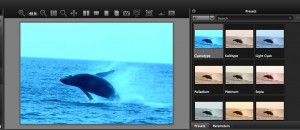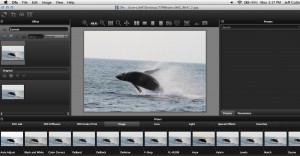Tiffen Dfx 3.0 – Review – Are Screw-in Filters Obsolete?
August 20, 2012

I came from film. Not literally, as I’m a 3-D human made up of cells and organs. But figuratively and professionally, my imaging career began with film. This meant, as most pro photogs can attest, I was trained not to waste film or create headaches for myself in post processing. I was further trained to try and compose as much of a shot in the camera as humanly or technologically possible.
Then came Photoshop and myriad other photo-manipulation software products and my training went out the window. But I still believed in – and carried with me – a slew of screw-on filters for my lenses. I thought, “the software is good, but would I rather spend two seconds screwing on a filter or 20 minutes working on a shot on the computer?”
Now THAT thought too is obsolete. I’ve found with Tiffen’s Dfx 3.0 standalone product, I can spend a few seconds (or minutes) ‘filtering’ a shot and end up with some really cool effects that are as good as if I’d put glass in front of my glass. This also means that I can carry fewer accessories and still not waste a ton of time in post processing on my laptop.
Let’s look at some real-world examples…originals first and then Tiffen adjusted. These took a grand total of FOUR minutes to adjust…SERIOUSLY!
*One note – I originally used the Supermoon and other winter shots to illustrate this software. As I’m FINALLY pushing this review live in August, I have redone (quickly, mind you) some shots to show the same features and offer a more calendar-appropriate image. Therefore, you will get whales instead of wintery moons.
Here are a few screenshots of the interface screens in Dfx 3.0. They’re easy to understand (if you know photos and colors) and they work quickly. Like I said earlier, these four photo adjustments took me a grand total of four minutes to do from start to finish.
Pictures are worth many words and you can see what I was able to do in a short period of time. What’s my take on the product?
I like it. The interface is easy to use and it’s FAST. The main reason I would choose this over Photoshop is because it’s one-click simple and you’re done. No need to waste time and energy fine-tuning stuff…but the Tiffen Dfx 3.0 lets you do that too if you’re so inclined.
Ultimately, for under $200 for the plug-in that works with CS3, or around $100 for the standalone, get it. You spend more buying one quality skylight filter for a 72 or 86mm lens. And you’ll spend much more on physical filters to get anywhere near the functionality you find here.
What’s your take on the product? What else have you used? How much photography do you do?













